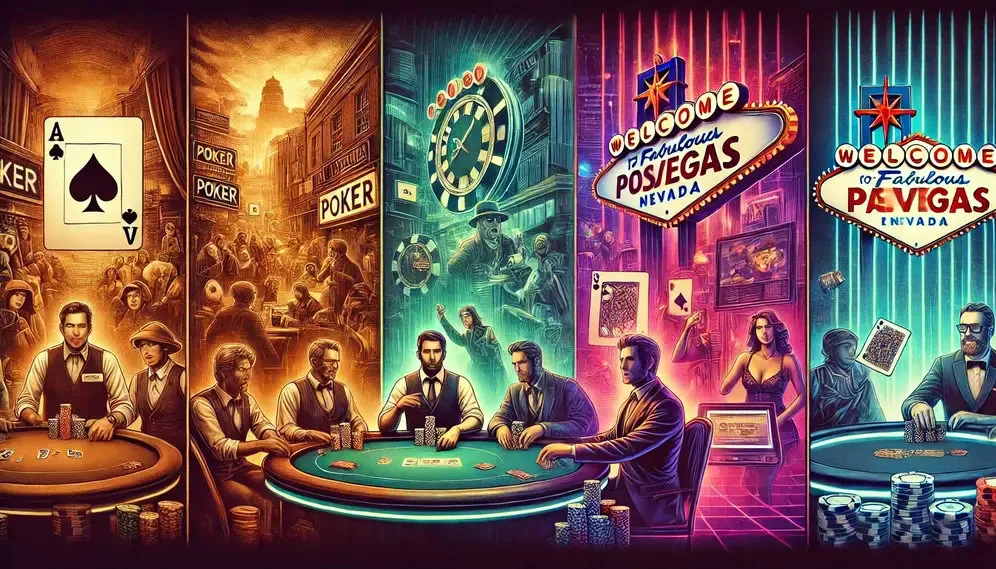
History of Sports Poker: From Underground Games to Global Recognition
Poker has undergone a remarkable transformation over the centuries, evolving from a pastime played in secrecy to a globally recognised competitive sport. Once confined to dimly lit backrooms and underground clubs, poker now enjoys a legitimate place on the world stage, with major tournaments attracting millions of players and spectators. This article explores the history of sports poker, tracing its journey from its humble beginnings to its modern-day acceptance.
The rise of online platforms and mobile applications, such as the Quigioco app, has further expanded poker’s reach, making it more accessible than ever. With digital innovations reshaping the landscape, the game continues to thrive, drawing in new generations of players eager to test their skills in both live and virtual arenas.
The Early Years of Poker – The Birth of the Game
Poker’s origins are widely debated, but many historians trace its roots to the 16th century Persian game As Nas, which featured betting and hand rankings. Over time, elements of various European card games, such as the French poque and the German pochen, contributed to what would eventually become poker. By the early 19th century, the game had taken shape in the United States, particularly along the Mississippi River, where gamblers and riverboat travellers popularised it.
During this era, poker was primarily a social game played in saloons and among soldiers during wartime. It quickly gained popularity due to its combination of skill, strategy, and chance. As the game spread across the United States, different variations, including five-card draw and stud poker, emerged, laying the foundation for the poker formats known today.
From Underground Games to Official Tournaments
For much of the 20th century, poker remained associated with underground gambling circles and private clubs. Laws regarding gambling were strict, forcing enthusiasts to seek out hidden locations where they could play without legal repercussions. Despite this, poker continued to grow in popularity, especially among professional gamblers who recognised its potential as a game of skill rather than mere chance.
The turning point came in 1970 with the creation of the World Series of Poker (WSOP) in Las Vegas. Founded by casino owner Benny Binion, the tournament aimed to bring the best players together in a structured competition. This marked the beginning of poker’s transition from an underground pursuit to a recognised sport. The introduction of televised poker games further legitimised the activity, drawing mainstream attention and elevating poker’s status worldwide.
The Era of World Tournaments and the Rise in Popularity
The WSOP’s success paved the way for numerous other poker tournaments, including the World Poker Tour (WPT) and the European Poker Tour (EPT). These events offered substantial prize pools and attracted players from diverse backgrounds, further solidifying poker’s legitimacy. With each tournament broadcasted to global audiences, the perception of poker shifted from a mere gambling activity to a skill-based competitive game.
This period also saw the rise of legendary players who became icons of the game, such as Doyle Brunson, Johnny Chan, and Phil Hellmuth. Their strategic brilliance and larger-than-life personalities helped poker gain mainstream recognition. By the late 1990s, poker had cemented itself as a serious sport, with professional players enjoying celebrity status and sponsorship deals from major gaming brands.

The Poker Boom of the 2000s – The Online Revolution
The early 2000s brought a seismic shift to poker, thanks to the advent of online platforms. Websites such as PokerStars and Full Tilt Poker allowed players to compete from the comfort of their homes, making the game more accessible than ever. The affordability and convenience of online poker attracted millions of new players, sparking an unprecedented boom. The ability to play multiple tables simultaneously and access instant poker strategy resources revolutionised the way the game was played.
The turning point for the poker boom was Chris Moneymaker’s victory in the 2003 WSOP Main Event. An amateur player who qualified through an online tournament, Moneymaker’s win inspired countless enthusiasts to try their hand at professional poker. This era saw a surge in online poker rooms and the rise of mobile applications such as the Quigioco app, further expanding poker’s digital reach and bringing a new generation of players into the game.
Modern Sports Poker and Its Acceptance
Today, poker is widely regarded as a game of skill, with many jurisdictions recognising it as a sport rather than just a form of gambling. Competitive poker has become a staple of global sports entertainment, with international events offering multi-million-dollar prize pools and professional circuits rivaling traditional sporting competitions. The rise of live-streamed poker games on platforms like Twitch has further popularised the game, allowing fans to engage with top players in real time.
As technology continues to evolve, so does the world of sports poker. Mobile applications, including the Quigioco app, provide seamless access to tournaments and training tools, ensuring that poker remains relevant in the digital age. With growing acceptance and continuous innovation, poker’s journey from underground games to global recognition is a testament to its enduring appeal and strategic depth.
